Living with ADHD (Attention Deficit Hyperactivity Disorder) can sometimes feel like an uphill battle. You might find yourself easily distracted, struggling to stay focused, or feeling restless. The symptoms you experience can hinder daily life or your ability to reach long-term goals if symptoms are left unhelped.
The good news is there’s a path to help you manage your symptoms. The first step is to understand the different types of ADHD and which type of ADHD your symptoms fall under. If you are unsure if you have ADHD, take our free ADHD assessment to gain insight into the symptoms you are experiencing.
In this article, you’ll learn about the different types of ADHD, the symptoms and executive function challenges that occur with each type, and proven treatment options to better manage your ADHD symptoms.
What is ADHD?
You may have heard that ADHD is just about being hyperactive or easily distracted. For many, it can be much more complex than that. ADHD is categorized into three different types, each with its own set of symptoms and challenges. Understanding which type you have can help you find targeted strategies to ease your symptoms.
ADHD is a neurological disorder that affects both children and adults, manifesting in various ways. While it may seem like ADHD is a modern-day phenomenon, the first discussions of these types of behavioral issues go back to 1798 by Scottish doctor Sir Alexander Crichton.
German doctors Franz Kramer and Hans Pollnow called this condition hyperkinetic disease in 1932. They noted that this condition consisted of children who could not sit still. This condition was officially recognized as a disorder in the 1960s. Since then, our understanding of ADHD has evolved significantly, leading to more effective treatment options.
It took until 1968 for hyperkinetic disease to be added to the American Psychiatric Association’s “Diagnostic and Statistical Manual of Mental Disorders” (DSM). In 1980, the APA renamed the condition to attention deficit disorder (ADD), with it being updated to attention deficit hyperactivity disorder (ADHD) in 1987 to include both those with and without hyperactivity issues.

The three different types of ADHD
ADHD is divided into three main types:
- Inattentive type (ADHD-PI)
- Hyperactive-impulsive type (ADHD-HI)
- Combined type (ADHD-C)
Each type affects executive function skills differently, requiring a unique symptom management approach. Let’s dive into each one to help you better understand what you might be experiencing.
1. Inattentive type (ADHD-PI)
If you often find yourself daydreaming, losing track of time, or forgetting important tasks, you might be struggling with the inattentive type of ADHD. There usually is a lack of hyperactivity with this type of ADHD. The main struggles are staying focused and organized.
Symptoms of inattentive type ADHD
- Difficulty paying attention to details
- Easily distracted by external stimuli
- Forgetfulness in daily activities
- Trouble organizing tasks and activities
- Often losing items like keys or phones
Causes of inattentive type ADHD
The exact causes of ADHD are still being researched. It is believed that a combination of genetics, brain structure, and environmental factors plays a role. If you have a family history of ADHD or were exposed to certain environmental toxins as a child, you may be more prone to developing this type.
Executive function skills affected by inattentive type ADHD
Inattentive type ADHD can significantly impact your executive function skills, particularly in areas like:
- Time management: You might struggle to estimate how long tasks will take, leading to procrastination or rushing.
- Organization: Keeping track of appointments, deadlines, and personal belongings might feel overwhelming.
- Focus: Staying on task can be a constant challenge, especially with activities that don’t capture your interest.
Techniques to improve executive function skills
To help manage these challenges, try these techniques:
- Time management: Break tasks into smaller steps and set a timer to stay on track. Use a planner or app to schedule your day and set reminders.
- Organization: Implement a system where everything has its place. Regularly declutter and use labeled containers or folders.
- Focus: Practice cognitive-behavioral techniques to help improve your attention span. Take regular breaks during tasks to reset and refocus.
2. Hyperactive-impulsive type (ADHD-HI)
Do you often feel restless, have trouble sitting still, or act on impulse? These are common symptoms of the hyperactive-impulsive type of ADHD. This type tends to manifest as excessive fidgeting, interrupting others, or making hasty decisions without thinking them through.
Symptoms of hyperactive-impulsive type ADHD
- Fidgeting or tapping hands and feet
- Difficulty remaining seated in situations where it’s expected
- Feeling the need to constantly move
- Interrupting others during conversations
- Acting without considering the consequences
Causes of hyperactive-impulsive type ADHD
Similar to the inattentive type, the hyperactive-impulsive type is believed to be influenced by genetic and environmental factors. Brain chemistry and the function of neurotransmitters like dopamine can also play a role in how this type of ADHD develops.
Executive function skills affected by hyperactive-impulsive type ADHD
Hyperactive-impulsive type ADHD can impair several executive function skills, such as:
- Impulse control: You might find it hard to resist immediate temptations, leading to impulsive decisions.
- Self-regulation: Managing emotions and behavior in response to situations can be difficult.
- Planning and prioritization: Organizing thoughts and actions in a logical sequence can seem nearly impossible.
Techniques to improve executive function skills
Here are some strategies that can help:
- Impulse control: Practice pausing before you react to situations. Use techniques like counting to ten or taking deep breaths.
- Self-regulation: Develop a routine that includes consistent activities to help manage restlessness. Mindfulness practices can also aid in controlling emotional responses.
- Planning and prioritization: Use lists and prioritize tasks based on urgency. Setting clear goals can help you stay focused on what’s important.

3. Combined type (ADHD-C)
If you recognize yourself in both of the descriptions above, you may have the combined type of ADHD. This type includes symptoms from both the inattentive and hyperactive-impulsive types, making it a bit more complex to manage.
Symptoms of combined type ADHD
- A mix of inattentive and hyperactive-impulsive symptoms
- Difficulty focusing and staying on task
- Impulsive behaviors and fidgeting
- Struggling with organization and time management
Causes of combined type ADHD
The combined type is thought to have similar causes as the other two types, involving genetics, brain function, and environmental influences. It’s also possible for symptoms to evolve over time, with some people developing the combined type after initially presenting with only one set of symptoms.
Executive function skills affected by combined type ADHD
With combined type ADHD, you may experience challenges across a range of executive function skills, including:
- Working memory: Holding and manipulating information in your mind can be difficult.
- Task initiation: Starting tasks, especially ones that seem daunting, could be a significant hurdle.
- Flexibility: Shifting between tasks or adapting to new situations can be stressful.
Techniques to improve executive function skills
Try these methods to support your executive functions:
- Working memory: Use visual aids like sticky notes or diagrams to keep important information accessible. Repeating information out loud can also reinforce your memory.
- Task initiation: Break tasks into small steps to make starting less intimidating. Reward yourself for completing each step to build momentum.
- Flexibility: Practice cognitive flexibility exercises, like solving puzzles or trying new activities, to enhance your adaptability.
Proven treatment options for ADHD
While learning techniques to manage your symptoms is crucial, it’s also essential to consider proven treatment options. ADHD is typically treated with a combination of medication, online therapy, and lifestyle changes.
1. Medication
Stimulant medications, like Adderall and Ritalin, are commonly prescribed to help manage ADHD symptoms by balancing neurotransmitters in the brain. Non-stimulant medications are also available for those who may not respond well to stimulants.
2. Online therapy
Online behavioral therapy is a powerful tool in managing ADHD. Cognitive behavioral therapy (CBT) can help you develop strategies to cope with your symptoms, improve your executive function skills, and change patterns of behavior that may be holding you back.
3. Lifestyle changes
Incorporating adequate sleep, structured routines, and stress management techniques can make a significant difference in managing ADHD. Mindfulness practices, like meditation or yoga, can help you stay centered, keep your mind clear of distracting or unhelpful thoughts, and improve your focus.

How Makin Wellness can help you manage your ADHD
Managing ADHD on your own can be challenging. Makin Wellness online ADHD therapy offers the flexibility to get help from the comfort of your own home. Whether you’re struggling with inattentiveness, impulsivity, or a combination of both, our specialized ADHD online therapists can create a personalized plan to grow in executive function gaps, build coping skills to manage your symptoms, and provide recommendations for lifestyle changes that work best for you and your goals.
Conclusion
Understanding the different types of ADHD is the first step in taking control of your symptoms. With the proper knowledge, techniques, and support, you can improve your focus, organization, and overall quality of life.
Remember, your symptoms, feelings, and struggles are valid; there is always hope for improvement. If you’re ready to start your journey toward better mental health, Makin Wellness is here to help. Reach out today by calling (833)-274-heal or scheduling your first session with a specialized online ADHD therapist and take the first step toward managing your ADHD.








